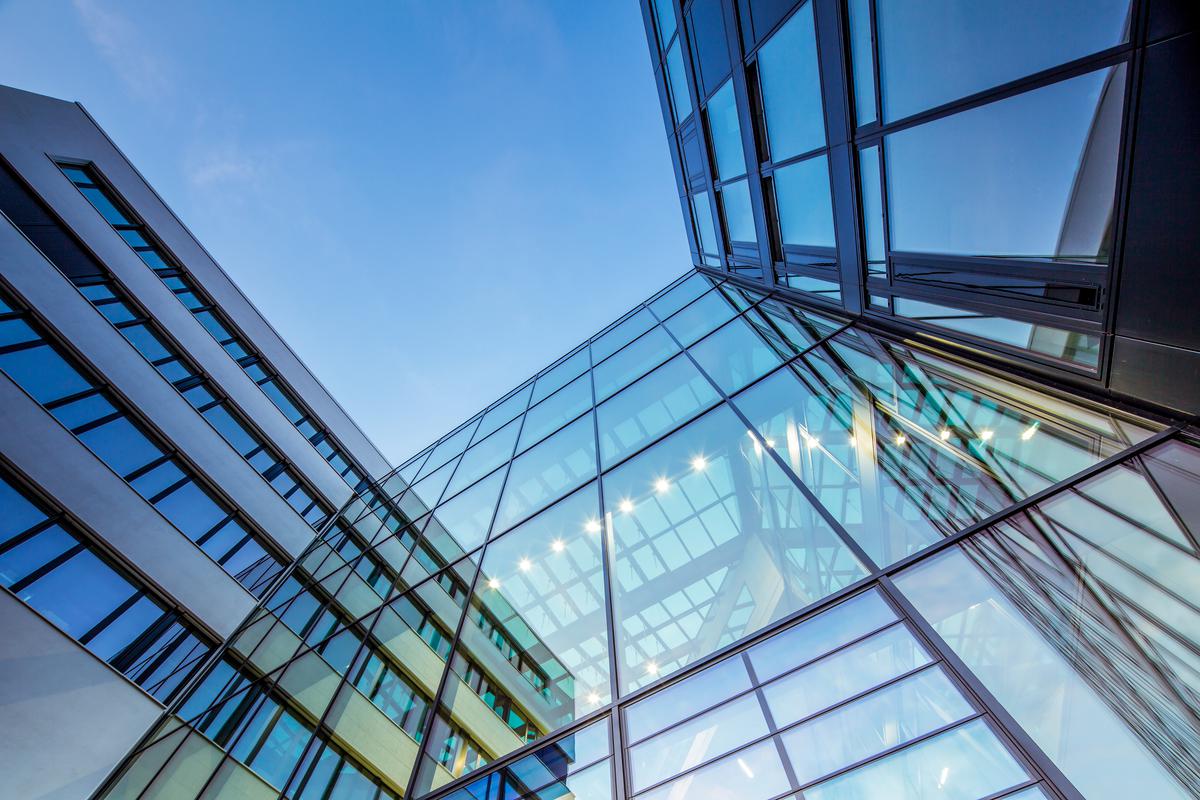The United Nations declared 2022 as the International Year of Glass to promote best practices and sustainability in the industry. Here we discuss its role in buildings and the benefits of tech
The United Nations declared 2022 as the International Year of Glass to promote best practices and sustainability in the industry. Here we discuss its role in buildings and the benefits of tech
Architectural glass allows us to open out and connect to the world outside, giving us access to views and bringing in natural light. An advantage of using glass as a wall element is that it is much slimmer than conventional wall materials, providing more floor space.
However, one problem with glass is that along with natural light, it also brings in the heat from outside, which can make the interiors uncomfortable in hot tropical climates. In fact, when compared to wall materials such as brick, glass tends to transmit more than double the amount of heat. Additionally, glass can also radiate a lot of heat from outside if directly exposed to solar rays, thereby leading to excessive air conditioning use in a hot and humid place like Chennai.
Heat resistance
One way to minimise heat transmission during design is to ensure sensible and judicious use of glass with adequate shading to prevent direct heat gain. Use of double glazed or even triple glazed windows, where there are two or three panes of glass separated by an air gap ensures better insulation or a very low U-value (measuring the amount of heat from ambient air outside that can pass through the glass) from both heat and noise. In addition, use of low-E (low emissivity) coatings on the external layer of glass will enhance the insulation.
Today, technological advances have led to multiple types of ‘high performance’ glass that let in the light (high visible transmittance), not the heat (low heat gain). This has been made possible by use of low emissivity (low-E) coatings on clear glass. These are thin coatings that prevent or limit certain wavelengths of light from passing through the pane while still allowing the passage of visible light. The commonly available tints in glass are neutrals, blues and greens, all of which provide a good balance between light transmittance and thermal resistance.
Saint Gobain, Asahi India Limited, Gujarat Guardian Limited and Pilkington India are some well-known manufacturers of high performance glass. For people looking for a clear glass aesthetic for their buildings, the neutral shades are a close match.
However, it is best to avoid large areas of clear glazing without any divisions at heights greater than two or three storeys, to prevent bird hits.
Tips to choose glass
1. Ideally, it is good to choose glass with a U-value not exceeding 5.5. If your lifestyle involves using a lot of air conditioning it is best to use double glazed windows which will bring down the U-value to 2.6.
2. With respect to SHGC (Solar Heat Gain Coefficient is the amount of heat from direct sunlight that falls on the glass and passes through it), it’s best to look for glass with a factor of 0.5 or less. When this is combined with adequate shading, the factor is reduced even further. If your home or workplace has large windows, especially facing east or west in a place like Chennai, you could look for glass with even lower SHGC factor of 0.35. However, do keep in mind that the cost of glass increases as the SHGC gets lower. A good strategy is to choose glass with a medium SHGC factor but ensure adequate sun shading on the building.
3. To ensure adequate visible light transmittance within buildings with smaller windows, it’s best to look for glass with a VLT (Visible Light Transmission) of at least 50%. In the case of large glass facades, a VLT of at least 35% is good.
Conscious selection of glass can go a long way in not only ensuring our own thermal comfort but will also reduce environmental pollution due to excessive air conditioning and provide substantial energy savings over time.
‘Buildings with glass use less power’
A.R. Unnikrishnan, MD, Glass Business, Saint-Gobain India, says, “An evaluation of the indoor environment of 30 offices across the country was conducted by Green Business Certification Institute (GBCI) India and Saint-Gobain Research India (SGRI) to assess the indoor environmental quality of workspaces in India and their impact on occupants’ health and well-being. The study was an extensive exercise carried out over a period of three years. The study highlights some of the critical issues unnoticed by occupants, like poor ventilation, improper lighting conditions, and ineffective noise control among others. There are four main factors that affect people’s experience of comfort in an indoor environment. They are thermal comfort, visual comfort, acoustic comfort and indoor air quality.
It has been observed that only 10% of offices met the standard for Equivalent Melanopic Lux (EML) during morning hours. EML is described as a way of measuring the biological effects of light on humans. Comfortable lighting does not glare or blind. People are more productive when they work in well-lit spaces. As per the study, commercial buildings with glass use less artificial light, consume less power. The overall energy savings for buildings that use natural light vary from 15% to 40%. About 74% of people reported no external views or only poor-quality views from their workstations. People with good outdoor views had higher energy levels at the end of the day.
Thermal comfort is that condition of mind that expresses satisfaction with the thermal environment across all seasons. As per the research, more than 56% of the spaces operated on the cooler side of the comfort zone.
Acoustic comfort is obtained by the absence or reduction of unwanted sounds from external sources like the local traffic or internal sources like office equipment, and people talking. The study suggests in 73% of spaces, levels of interior background noise were higher than the standard threshold.
Since we spend more than 90% of our time indoors, our indoor environment and its systems significantly impact the quality of the air we breathe. In 73% of the spaces, the levels of three or more contaminants did not meet the prescribed limits. Volatile Organic Compounds (VoCs) in building materials predominantly are the root cause for unhealthy air quality. Glass as a building material does not only have any VoCs but is odourless too.
The joint research reveals that offices need to prioritise the evaluation of their indoor environment and take necessary action to improve them.
The writer is the founder of Green Evolution, a sustainable architecture firm.






